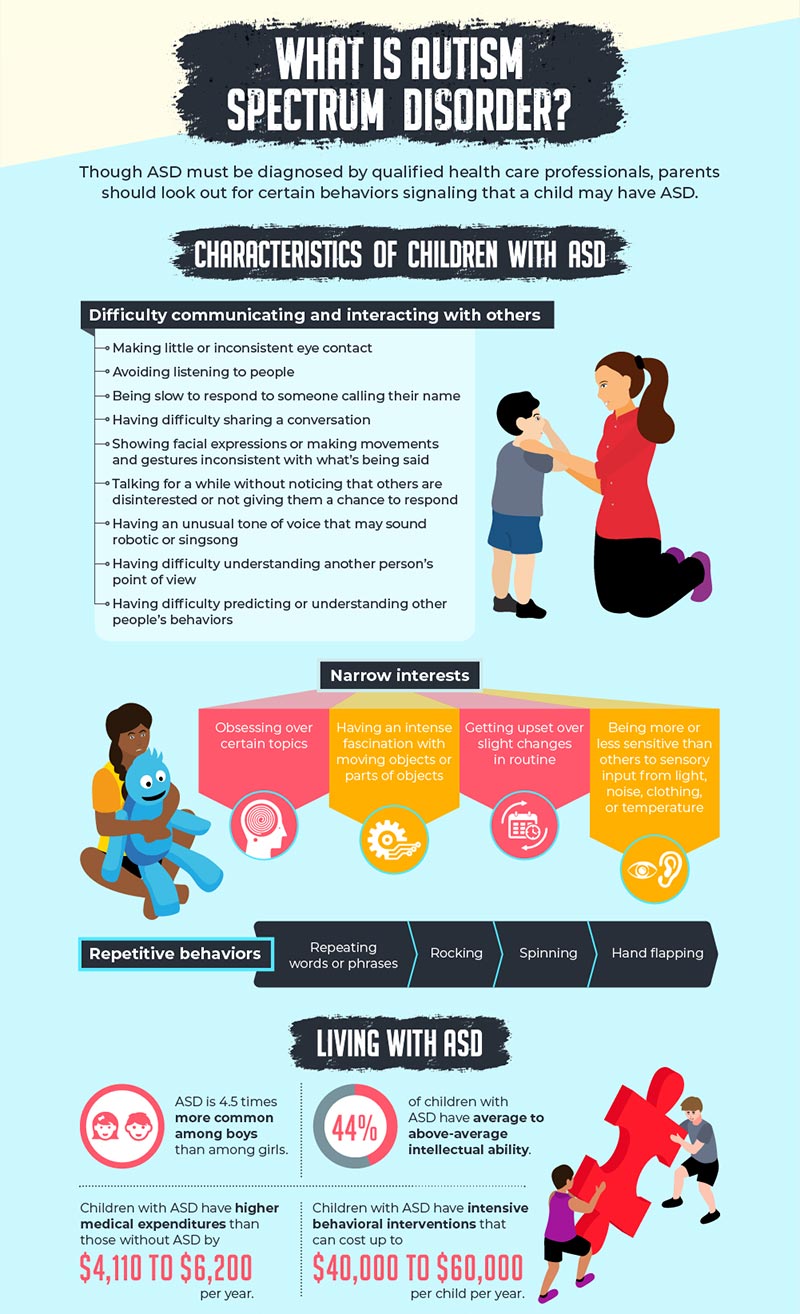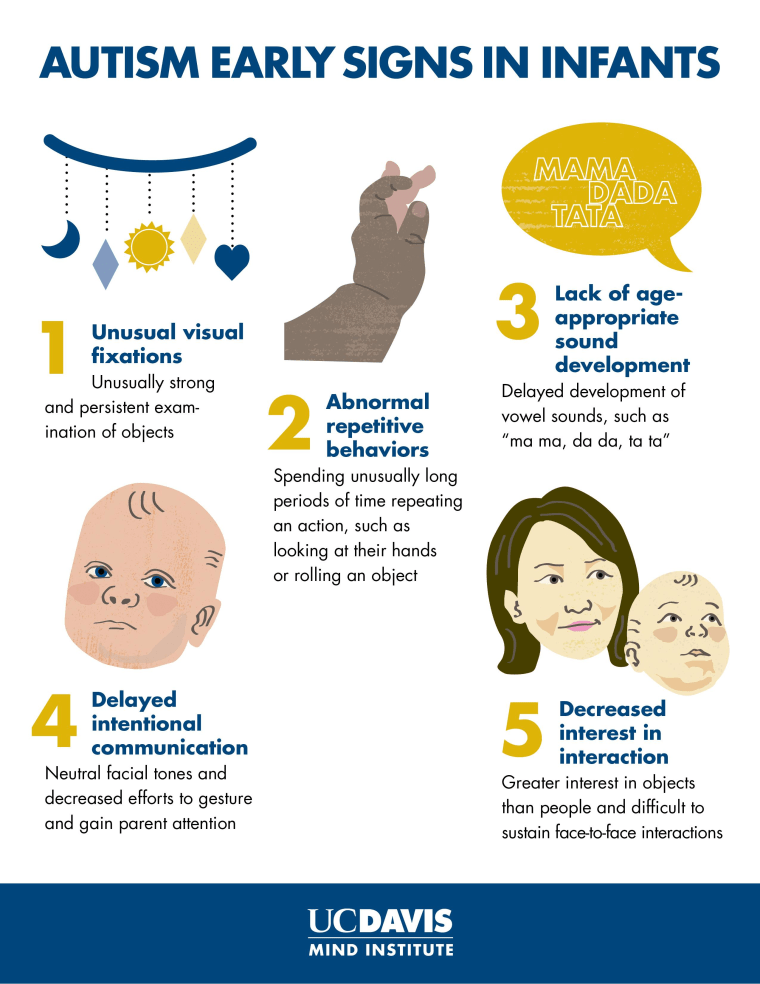Top 10 insights about how an Autism Therapist supports social growth in autism
Top 10 insights about how an Autism Therapist supports social growth in autism
Blog Article
Comprehending the Effect of Behavioral Autism on Day-to-day Live and Social Communications
You may not realize exactly how deeply behavioral autism impacts life and social interactions. People on the range often navigate a globe filled up with communication hurdles and sensory overload. These obstacles can bring about stress and seclusion, influencing their partnerships and total wellness. Understanding these nuances is crucial for cultivating encouraging atmospheres. What techniques can we implement to develop even more purposeful connections and comprehensive areas? The answers may shock you.
Specifying Behavioral Autism and Its Qualities
Behavior autism, typically referred to as autism range disorder (ASD), incorporates a variety of conditions characterized by obstacles in social interaction, interaction, and recurring behaviors. You might notice that people with ASD typically battle to translate social cues, which can cause misunderstandings in discussions. They may locate it tough to establish eye contact or participate in tiny talk, making social situations feel frustrating.
Communication difficulties can materialize in different ways, from delayed speech development to a choice for using fewer words. Repeated behaviors, such as hand-flapping or rocking, can work as coping mechanisms to take care of stress and anxiety or sensory overload. These characteristics can profoundly influence day-to-day life, making it essential for you to recognize and sustain those with ASD. By identifying these attributes, you can foster a setting that promotes approval and encourages effective communication, assisting individuals with autism prosper in their everyday interactions.
The Range of Autism: Comprehending Irregularity in Behavior
Autism range condition (ASD) isn't a one-size-fits-all diagnosis; it varies extensively amongst people. You might encounter people that are highly spoken and engage easily in discussions, while others may prefer singular activities or connect non-verbally.
In addition, the method individuals with ASD reply to sensory input can vary considerably; some could be bewildered by loud noises or intense lights, whereas others thrive in boosting environments. The spectrum additionally includes distinctions in social interactions; some people might have a hard time to analyze social hints, while others browse social settings with family member convenience. Comprehending this irregularity is important, as it aids you appreciate each individual's unique experience and dressmaker assistance to their details requirements, cultivating a more comprehensive setting for everyone.
Interaction Obstacles Faced by People With Autism
When you interact with individuals on the autism range, you might discover their unique interaction obstacles. They often deal with difficulties with both spoken and nonverbal hints, which can impact their social interactions. Recognizing these obstacles is necessary for fostering much better connections and assistance.

Verbal Communication Problems
Several people on the autism spectrum experience spoken interaction problems that can substantially impact their daily communications. Your pace, tone, or quantity could not line up with social expectations, creating others to misinterpret your intentions. Identifying these difficulties can help you and your assistance network establish strategies to boost communication and cultivate far better links with others in your daily life.
Nonverbal Interaction Barriers
Spoken communication isn't the only obstacle individuals on the autism range face; nonverbal communication obstacles can be just as substantial. You might locate it tough to analyze body language, faces, and eye contact, which are important for reliable communication. These difficulties can lead to misconceptions or misinterpretations of social hints, making communications feel complicated or frustrating. You may battle to express your very own emotions with nonverbal methods, leaving others not sure of your feelings or purposes. This separate can produce feelings of seclusion and irritation. Recognizing these barriers is critical for fostering understanding and empathy in your communications. By addressing nonverbal communication, you can find methods to boost your social experiences and boost your overall high quality of life.
Social Interaction Effects
Social interactions can frequently feel frustrating due to the unique interaction obstacles faced by people with autism. Recognizing these obstacles can help you locate techniques to boost communication, such as exercising social skills in risk-free setups or utilizing aesthetic aids. Comprehending your requirements allows you to browse social communications with higher confidence and simplicity.
Social Communication and Partnership Structure in Autism
While structure relationships can be challenging for people with autism, recognizing their distinct viewpoints and interaction styles can foster purposeful links. You might observe that many people on the range prefer straight interaction and might have problem with social signs or small talk. By being uncomplicated in your communications, you can assist create a setting where they really feel comfy.
Make the effort to observe and listen how they share themselves. This understanding can guide you in guiding conversations extra properly. Participating in shared rate of interests can likewise offer as a bridge to much deeper links. Whether it's a visit our website leisure activity, a favorite show, or a shared enthusiasm, these typical threads can open up doors to relationship.
Day-to-day Live Regimen: Browsing Methods and difficulties
Navigating everyday life routines can be particularly challenging for individuals with autism, particularly when unexpected adjustments occur. You might find comfort in having a structured schedule, as it helps you Continued expect what's following. When interruptions happen, it's regular to really feel overloaded or nervous. To navigate these challenges, consider applying visual schedules or lists. These devices can offer quality and peace of mind.
Establishing a routine that includes sensory breaks can also be valuable. You can intend short breaks throughout your day to charge. It's important to connect with those around you, allowing them recognize your needs and choices. This helps produce an understanding setting.
Finally, technique mindfulness techniques to handle stress and stress and anxiety. Straightforward breathing exercises or grounding strategies can make a significant distinction. By including these techniques, you can improve your daily regimen and lessen disruptions, making life really feel extra manageable.
Strengths and Capabilities of People on the Autism Range
Comprehending daily life routines is just one aspect of the autism experience. Numerous people on the autism range have impressive toughness and abilities that set them apart.
Furthermore, your memory skills commonly radiate, particularly in areas of rate of interest. Autism Therapist. This knack for retaining details can make you a beneficial source in fields like modern technology, art, or scientific research. You may additionally display solid visual thinking, allowing you to envision complicated concepts and solve troubles artistically
Furthermore, your unique perspective on the globe can cultivate empathy and understanding in others, enhancing social communications. Accepting these strengths not only improves your self-confidence however likewise helps others value the varied talents you give the table.
Creating Comprehensive Environments for People With Autism
Creating comprehensive environments for people with autism begins with creating sensory-friendly spaces that deal with their distinct demands. You can also cultivate chances for social communication, aiding to develop relationships and links. By making these modifications, you'll add to a more welcoming ambience for why not look here everyone.
Creating Sensory-Friendly Spaces
While making sensory-friendly areas, it's crucial to show on the distinct needs of people with autism. Include silent areas where individuals can recharge and retreat when bewildered. Consist of visual timetables or clear signage to help individuals navigate the room with confidence.
Advertising Social Communication Opportunities
Creating sensory-friendly areas not just addresses individual comfort however additionally sets the phase for meaningful social interactions among people with autism. Motivate peer mentoring, pairing individuals with autism with supportive peers who can direct them via social situations. By applying these methods, you can boost social possibilities, helping individuals with autism build relationships and strengthen their social abilities in a risk-free, welcoming atmosphere.

Often Asked Concerns
How Can Friends Support Somebody With Behavioral Autism?
You can support a good friend with behavior autism by holding your horses, listening actively, and appreciating their limits. Participate in tasks they take pleasure in, communicate openly, and produce a comfortable setting where they really feel valued and comprehended.
What Resources Are Available for Moms And Dads of Children With Autism?
You can explore different resources for moms and dads of youngsters with autism, including support teams, academic web sites, and local social work. Getting in touch with other moms and dads can likewise give useful understandings and shared experiences to help browse obstacles.
Can Behavioral Autism Change In Time?

Yes, behavior autism can alter with time. You could discover changes in interaction, social skills, and actions as your child expands. Early intervention and support often play crucial duties in these developing modifications.
Exactly How Do Sensory Level Of Sensitivities Impact Daily Life?
Sensory level of sensitivities can make everyday experiences frustrating. You might fight with loud sounds or intense lights, resulting in stress and anxiety or evasion. Locating settings that accommodate your demands can greatly improve your comfort and general day-to-day live.
What Are Typical Misconceptions Regarding Behavioral Autism?
You may believe behavior autism only affects interaction skills, however it's even more complicated. Numerous assume people lack compassion or knowledge, which isn't true. Recognizing these mistaken beliefs helps foster acceptance and assistance for those on the spectrum.
Behavioral autism, typically referred to as autism spectrum problem (ASD), incorporates an array of problems characterized by obstacles in social interaction, communication, and recurring behaviors.Social communications can commonly feel frustrating due to the one-of-a-kind communication challenges encountered by individuals with autism.Designing sensory-friendly areas not just addresses private convenience but likewise sets the phase for significant social communications amongst people with autism. Motivate peer mentoring, coupling people with autism with encouraging peers who can lead them through social circumstances. By executing these strategies, you can enhance social possibilities, assisting people with autism build friendships and reinforce their social skills in a risk-free, welcoming environment.
Report this page